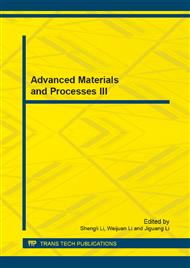p.595
p.601
p.605
p.610
p.617
p.621
p.626
p.633
p.637
Degradation of Organics from Laboratory Wastewater by Ultrasonic/Fenton Process
Abstract:
Organics in laboratory wastewater were treated by ultrasonic/Fenton method. COD degradation of laboratory wastewater was studied, which was affected by some factors such as ultrasonic frequency, ultrasonic power, the dosage of H2O2 and Fe2+, and the initial pH. Orthogonal experiment was carried out. The results of degradation by ultrasonic/Fenton method were compared with those results when ultrasonic or Fenton was used to degrade organics respectively. The results show that ultrasonic/Fenton can effectively degrade the organic pollutants in laboratory wastewater, and the degradation efficiency is higher than that of each process alone. The optimal conditions are as follows: frequency is 45kHz, power is 120W, the concentration of H2O2 is 0.71mmol/L, the concentration of Fe2+ is 0.03mmol/L and pH is 3 in the experiment when COD of 50mL laboratory wastewater is 21972mg/L.
Info:
Periodical:
Pages:
617-620
Citation:
Online since:
September 2013
Authors:
Keywords:
Price:
Сopyright:
© 2013 Trans Tech Publications Ltd. All Rights Reserved
Share:
Citation:


